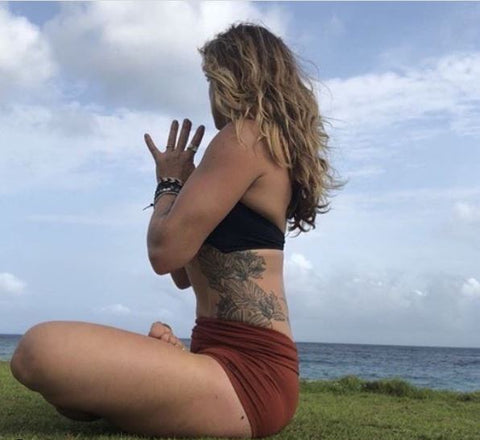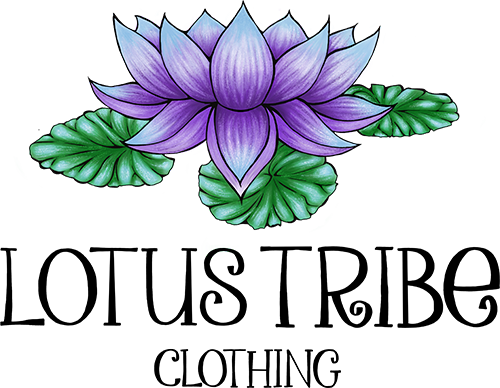If you've ever been to a Yoga class, you have probably witnessed people say "Namaste," while slightly bowing to each other, with hands held chest high and palms pressed together. Perhaps you have even done this yourself, but have you ever wondered the significance behind this greeting and these gestures?
Are these just things done in a Yoga class, or are they more than yoga? Maybe you wonder if they are Hindu, hippie, new-age, spiritual or some combination of these? Namaste is so frequently used that it feels familiar, even without knowledge or context of its origin. Do you want to know if there is a deeper meaning to these gestures? In this installment of our Yoga blogs, we will be looking at Namaste, the word and action.
Namaste- The Word As A Greeting
Like all things, the meanings of words tend to change and evolve over time. As far as scholars can tell, Namaste was first used in Hindu religious texts, like the Vedas, where it was used to salute the divine. It had an aspect of adoration, devotion and worship.
More recently, the word Namaste has gotten a pop culture connotation to mean "The light in me honors the light in you." It is often used by yoga teachers at the start and end of a Yoga class and has even become common as a slogan on t-shirts. Although this current definition is not altogether incorrect, it definitely has more to it.

People greet each other in many different ways all over the world. In America, we might greet a friend with something informal such as "Hey there," or we might even shorten it to a simple "Hi." In both cases, we are acknowledging another person and saying hello. On the other end of the spectrum, we might be more formal and greet others with "Hello Mr./Ms./Mrs. So-And-So," or possibly as "Sir." In some cases, we might even use "Your Honor," which is reminiscent of times past, when we might have greeted someone with "My Lord," or "My Liege."
Namaste (some people use "Namaskar" instead) belongs in the more formal category, as it is a reverential way of greeting someone. In fact, it is one of the six Pranāma. A Pranāma is a respectful or reverential greeting. It usually includes bowing and is used to greet someone or something in a respectful way. Traditionally, this was used for a divinity, a deity, a holy person or even an image of a deity. It has now evolved to include an elder, your spouse, a teacher or anyone you respect. When you choose to greet someone with "Namaste," you are not only acknowledging their presence, but you are doing so with the utmost respect.
The word Namaste is made up of two parts, -Namas and -te. Namas is translated as 'bow' and te translates as 'to you.' So, the literal translation is 'I bow to you.' As such, the word is often accompanied by a literal bow of the head, with hands in prayer position. These slight additions add even more esteem and thoughtfulness to the greeting.
Namaste- The Action, Bow and Prayer Hands
So, what is the hand gesture that often goes along with the word Namaste? When one has their hands in prayer position, their hands are in front of their heart with palms pressed together. This is called Añjali Mudrā and it is commonly used in Yogic and Hindu practices. This non verbal gesture is often one of the postures found in Indian classical dance and is widely found in Indian temple reliefs.
In Sanskrit, the word Añjali means 'to honor' and 'to celebrate.' It is sometimes translated as "offering." Mudra is often translated as 'seal' or 'sign,' (but gesture also works). So, the Añjali Mudrā is an offering, sign or gesture of celebration or honor.
What about the bow? If you remember earlier, Pranāma is a respectful or reverential greeting. Asana, a term you might already be familiar with from Yoga classes, means posture or pose. So, Pranamasana is the pose of respectful greeting and it actually includes the Añjali Mudrā within it. When these actions accompany the word Namaste, it is one of the most respectful ways to address another person in the East.

Spiritual Significance and Symbology
In yoga, one may incorporate the Anjali Mudra into their practices without another there to receive or witness it. It is considered a "centering pose" that, according to practitioners, helps to alleviate mental stress and anxiety. It is therefore used to assist the Yogi in achieving focus and coming into a meditative state. Mudras are known to help cultivate a specific and desired state of mind. It can be used to express gratitude and devotion, or as a way to quiet the background chatter of your mind.

The traditional Añjali Mudrā is performed with your palms folded together at the center line of your body, with a small space left in the center, your thumbs touching your body at heart center. The space in the center represents the hidden inner light that is within each person. This space is protected and revered, it is associated with the compassionate heart. The head bows towards the heart center and the gaze is brought downwards to the hands. All focus and concentration is on your personal inner flame and intention.
To have "prayer hands" is to remind oneself that the practice is a form of prayer. It is believed that by connecting the palms, the energy in your body is joined, becomes calmer and your brain finds increased connection. This simple action not only connects the two hemispheres of the brain, but it is also symbolic of nonduality overcoming duality and the yoking, or union, of yourself and the divine. Not surprisingly, this is also what traditional Yoga is all about.
The Gestures Outside Of Yoga
Although the meaning might vary from place to place, all across Asia, a variation of the bow and prayer hands are used. For example, in India it is a customary, non-contact manner of greeting a person at any time of day.

Whereas in Bali, they make prayer hands and say "Om Swastiastu," which is a greeting that includes a prayer for the other person to always be blessed by the Gods.
While in Thailand, they use the very same hand gesture as a greeting, but it is called a "Wai." Often times the tips of the fingers are even with your nose, the higher your hands, the higher honor you bestow upon the other person.

The "prayer hands" position is also widely used in Christianity and other religions too. Regardless of the country, it is always seen as a friendly and respectful greeting and gesture.
By combining the bow and mudra with the word Namaste, one can differentiate the intention. It becomes a Yogic, or spiritual gesture, not to be confused with another religious tradition.
Final Thoughts
Namaste is a word that invokes respect and admiration and is commonly used as a reverential greeting. Although the literal translation may be "I bow to you," the actual meaning is much more nuanced in today's world. Adding a slight bow to the word Namaste signifies a deeper level of respect, often bestowed upon teachers, sages and holy people. Prayer hands are a symbolic gesture of both gratitude and devotion. When combining these three together, we express our deepest and most sincere, heartfelt salutation.
It is also a way to recognize our shared unity and to honor the view that each and every one of us is divine. It is welcomed for all people from all backgrounds, nationalities and faiths to practice. The heads of state in India, where yoga and its traditions originate, want the rest of the world to learn from and experience all that yoga has to offer.
Ram Nath Kovind, the 14th president of India, was recently quoted as saying that "Yoga is a gift to humanity and India's great gift to the world." He believes that yoga offers a holistic approach to health and well being. Droupadi Murmu, the current President of India, suggests that everyone finds time daily for yoga, meditation and walking. Also, India's Prime Minister, Narendra Modi, established the Ministry of Ayurveda, Yoga & Naturopathy, Unani, Siddha, and Homoeopathy (AYUSH). These statements, programs and actions clearly illustrate their intention to share these beliefs and practices far and wide.
We here at Lotus Tribe agree wholeheartedly. We wish to share the ideas that come from yoga, so that each of you can have an enriched and more rewarding life, as well as help you delve further into your Yogic journey and practice. We hope that we have demystified yoga a bit with this installment of our Yoga Blogs, on the common Yogic greeting and gestures known as Namaste, Pranamasana and Añjali Mudrā.

~🙏Namaste🙏~

